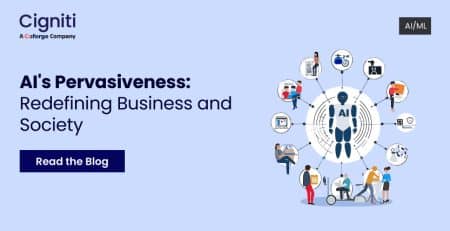5 Ways a Modern Application Architecture Can Benefit Your Organization
The need for organizations to compete in a changing market more rapidly than ever motivates the necessity for a robust modern application architecture. Organizations’ demand for new application features and capabilities constantly changes, and developers need help to keep up with change requests utilizing legacy application development tools and underlying infrastructure.
Organizations increasingly see application design as a critical component of how they compete in the market, and the choice to modernize apps stems from a desire to solve a business problem. Businesses strive to get more customers by creating appealing digital products and providing them more quickly, achieved through application modernization.
“By 2024, most legacy applications will receive some modernization investment, with cloud services used by 65% of the applications to extend functionality or replace inefficient code.”
IDC
The most recent application developments include autonomous development teams segmenting apps into microservices and optimizing on containers or serverless cloud technologies. This technique eliminates conventional code-to-deployment hurdles, allowing for large-scale innovation while reducing the risk of security breaches and downtime.
Organizations must prioritize application modernization and devote significant attention to this endeavor to stay ahead of the competition and disruptive developments.
Urgent need to replace legacy apps with modern apps
Monolithic applications have been developed with legacy software and apps for decades, which has prevented organizations from having a solution portfolio that can quickly adapt to business demands for digitalization. Legacy apps are less adaptable and inhibit team agility.
Legacy applications sometimes consume a considerable portion of information technology (IT) costs for maintenance, leaving businesses with little money to extend their solution portfolio.
Several leading organizations with legacy application portfolios are modernizing and, eventually, using application development to offer new digital experiences for their customers as a competitive market advantage.
Five ways how modern applications benefit organizations
According to the latest IDC report, because components are independent of one another, modern apps allow developers to experiment freely with new features without the worry of creating substantial disruption. Here are the top reasons your organization needs to modernize legacy applications immediately:
- Accelerate time to market
A legacy application allows adjustments to be conducted and tested only on the necessary components, minimizing the time required from code change to deployment. Traditional systems can take months to deliver new features. However, a refactored application may accept a request for a new or updated feature, alter code, and complete deployment and user availability in minutes, thus accelerating time to market. - Add agility
The availability of container and serverless technologies for deployment allows developers to optimize cloud services to immediately expand infrastructure to meet the shifting demands of an application. Instead of developing the complete infrastructure supporting a monolithic application, a subset of containers that fit the unique user demand can be scaled up in microseconds. - Security cover
With the acceleration of application modifications comes the difficulty of dealing with security concerns that may arise while altering code. Checkpoints added to a development life cycle utilizing new architectures may guarantee that all security elements are controlled and enforced in modern architecture. - Continuous improvement
Monitoring outages and container portability enable an application spread across regions to recover quickly, and as a result, high availability becomes a requirement for many applications. One of the key advantages of adopting public cloud technology is the ability to track each stage of the application development life cycle. As new features are introduced and used, this creates a tight feedback loop that allows programs to be continually improved. - Achieve common business goal
Development teams are plagued with a backlog of projects due to the massive technical debt of legacy infrastructure. Any organization’s IT leadership team is pressured to respond quickly to current technology. Investing in modern application development technologies and a DevOps approach is a win-win situation that connects line-of-business management with IT teams’ goals and vision, ultimately leading to achieving common business goals.
Concluding lines
Digital transformation has become a top priority for organizations and a fundamental necessity in an environment where established organizations are challenged by technologically advanced startups that use technology as their core strength without incurring technical debt. New business opportunities demand a modern technological platform. A modern technology platform necessitates a cultural shift and the acquisition of new skills to use modern development tools. Refactoring existing apps is essential in an organization’s cloud adoption journey.
A modern application development and delivery platform enables the refactoring of monolithic programs into components or microservices; a serverless operational architecture decreases the burden of maintaining these resources. Organizations must ensure that their cloud provider provides developer tools to safely manage these resources as they go from code modification to production.
At Cigniti, our Application Modernization services help you upgrade your legacy systems to a modern cloud-native microservices core, allowing your businesses to innovate at scale while lowering technical debt. Visit our Digital Engineering services to know more!





Leave a Reply